The Forex Day Trading Mini-Course is designed to give the essential information you need to day trade forex effectively, as well as several strategies.
The forex day trading mini-course covers:
- Understanding that day trading isn’t easy.
- Assessing if day trading forex is right for you.
- Introduction to forex and how forex works.
- How to manage day trading risk on multiple levels.
- Some forex strategies you can start using today.
- Strategy enhancements and analysis techniques for forex.
- Routines and techniques to improve your trading.
- Live trading videos.
- Building your own trading plan.
- Managing emotions while trading.
If you want a complete method for day trading forex, check out the EURUSD Day Trading Course. In video format, it shows you (step-by-step) how to day trade in 2 hours or less a day, with strategies and patterns that play out day after day.
Forex Day Trading Mini-Course
The forex day trading mini-course is a structured list of helpful articles from the website. Go through the linked articles, in order, to get an overview of how forex trading works and how you can do it yourself.
Day Trading Isn’t Easy…But It Can Look Easy
Before we delve into how to day trade, it’s important to point out that most people fail at this. The success rate is only a few percent, despite how easy it looks on the surface. The Day Trading Success Rate discusses actual results I saw while trading for a day trading firm. Most people who were hired couldn’t cut it. The article discusses why.
The Real Reasons Most Traders Lose Money digs deeper into why most traders fail, and how to avoid that fate. Come back to this article in the future if you are struggling. Likely, what you are dealing with and how to overcome it is discussed in there.
While day trading may not be easy, it is definitely worth the effort. The Scenarios for How Much Forex Day Traders Can Make discusses the profit potential.
Also, before you start trading any market, DEFINE YOUR PURPOSE. What is your trading purpose? At a glance, this may seem like a silly question. Money or time are typical answers. Those are vague answers, not purposes. A purpose is deeper. It is WHY you want more time or money. Defining Your Trading Purpose is a powerful catalyst for staying focused and making fewer mistakes.
Is Forex Day Trading Right For You?
Before spending a bunch of time learning how to day trade forex, consider if this is really how you want to trade?
You may love forex but aren’t sure if you prefer day trading, swing trading, or both.
Should I Day Trade or Swing Trade can help you decide which style of trading (or both) fits your life and personality.
You may also want to consider whether forex is what you are most interested in. Which Market is Best for Day Trading (stocks, forex, or futures) breaks down the pros and cons of each market, which may help you decide which one you prefer.
Most day traders don’t trade more than a few hours per day. They trade when conditions are good for their strategy, and that is it. They don’t force it or try to trade all day. That said, most day traders spend more hours practicing, refining, and reviewing their trades than they do trading. It is the hours we put in outside trading hours that make all the difference. How Many Hours Do Day Traders Work looks at what to expect in terms of time commitment if you want to be a day trader.
Forex Market Basics
How Forex Works: Most people are familiar with how stocks work, but not many people know how the forex market operates. Maybe you have exchanged some currency at your bank, but trading forex is totally different. It is the biggest market in the world, and you can trade around the clock with lots of leverage. Introduction to Forex lays out what you need to know about this market before you get started.
And if you want a more thorough introduction to forex, in video format, then check out the Forex Introduction Video Course.
Choosing a Forex Broker: Choose a regulated forex broker, preferably one that has low spreads and cheap commissions. Spreads and commissions are your biggest cost when day trading, so lower is better. Also, avoid the temptation to take a “bonus” when you sign up for an account. Don’t Take a Forex Broker Deposit explains why.
Pip Value: While stocks move in one-cent increments, forex pairs move in pips, and can move 1/10 of a pip at a time. A pip is a unit of measurement, but since we are dealing with currencies that have different values, how much a pip is worth can change. But there are simple ways to figure this out and understand. The Definitive Guide on Forex Pip Values explains how it works.
Forex Order Types: Now that you know how forex and pip values work, you need to know how to place orders, and the various types of orders available in the forex market. Forex Order Types, and When to Use Them tackles this topic.
Which Pairs to Trade: Saying you will trade day trade forex isn’t specific enough. Will you trade the EURUSD? Or the USDJPY? Both? Will you look at five pairs during the day, or only one? I day trade the EURUSD, but you could also trade the USJPY or GBPUSD. Pick one, or maybe a few, and stick with them. Which Forex Pairs to Trade discusses this, as well as the pairs that are good for swing trading.
What Time Frame to Use: Like any other market, in forex you can enter and exit trades in seconds or minutes, or you can hold positions for years. If you are day trading, your trades will typically last minutes to possibly hours. I generally trade on the 1-minute chart, but that may not appeal to everyone. Therefore, you’ll need to decide what time frame(s) you want to trade. Basically, what chart time frame will you study to find your trades? 1, 5, 10, 15 minutes? An hourly chart? What Time Frame to Use When Day Trading looks at various time frames and helps you decide which one works best for you.
Forex Day Trading Risk Management
The forex day trader uses several tools to control their risk. The objective is of course to make money, but even more so, the goal is to always “live to trade another day.” It doesn’t matter how good someone is, if they continually risk too much they will eventually be wiped out. Here are the tools we use to control our risk.
Position Size: When placing orders, we need to know how much currency to trade. This is called our position size, and the amount of currency we trade isn’t random. It is based on a formula. For day trading forex, I recommend risking 0.5% to 1% of the account once you are consistently profitable. This means if we lose on a trade, we will lose less than 1% of our account on any single trade. When starting out, I recommend trading with a risk of 0.1% per trade until you prove your profitability to yourself.
The risk is controlled, but our position size may end up being 20x, 30x, or even 50x the amount of money we have in the account. Leverage allows us to take positions that are bigger than the capital we have in the account. Forex Position Sizing Methods explains how this works.
Stop Losses: Our stop loss gets us out of a trade if the price doesn’t move as expected. The order closes out our trade so that we don’t lose more than a small amount of our capital on any single trade. How and Where to Place Stop Loss Orders on Your Forex Trades covers why a stop loss is used, and where it can be placed.
Each strategy may have its own stop loss location, but that article provides a good overview of how they are used.
Set Daily Loss Limits: No matter how good we think we are, the market can take our money quickly. Some days, we are going to lose. And on such days we need to make sure the damage stays small. Setting a Maximum Daily Loss discusses why we should cap our daily losses, and how to determine when we should stop trading for the day when things aren’t going our way.
Specific Forex Strategies for Day Trading
The following forex strategies provide entry and exit methods, as well as in what pairs and at what time the strategies should be used. It is your job to apply the proper position sizing on all trades and make sure conditions/context are good for the strategies you are trading.
I recommend learning and getting good at one strategy at a time. This is the most efficient way to profitability. Before delving into the strategies below, I suggest reading through the Steps to Becoming Profitable so you can start making money with these strategies in the most efficient way possible.
- The Double Pump EURUSD Day Trading Strategy – This is a trend-following strategy that capitalizes on a brief pause before the trend continues.
- The EURUSD Session High Low Day Trading Strategy – This strategy capitalizes on a tendency for the price to pop through the high or low of the day as the price gets close to it.
- Snap Back Day Trading Strategy for EURUSD 1-Minute Chart – This is a trend-following strategy that capitalizes on a pullback and then a sharp move back in the trending direction.
The above strategies may produce a couple trades a day, but that will depend on how long you trade for. For more strategies, that occur more often, check out the EURUSD Day Trading Course.
Living Trading Examples
EURUSD Recorded Day Trading Sessions, Watch Me Trade – I don’t record my day trading sessions too often. It is a little hectic with kids running around in the background, but here are a few sessions I have recorded.
Strategy Enhancement / Analysis Methods
Use these concepts to enhance your trading or build your own specific strategies. Think of these articles as building blocks for strategies; they help you analyze how the price is moving and/or how you are trading.
Understanding Trends and Reversals: Prices are always moving back and forth, creating trends, and then reversing them. We need some way of understanding or analyzing this chaos. How to Spot Trends and Trend Reversals Using Price Action is an article and video that shows you how to make sense of price movements as they are occurring.
More on Price Action: If you want to expand on the price action knowledge you gained from the articles above, see Price Action Day Trading Cheat Sheet and Become a Master of Price Action Trading.
False Breakouts: False breakouts occur when the price moves through an important area, but then reverses direction. Since something important was supposed to happen, but then it failed to materialize, that can provide a great trading opportunity. False Breakouts Are Key Trading Opportunities looks at what false breakouts are, how they occur, and some ideas on how to trade them.
Trading Statistics: Especially when starting out, it is worth tracking your trading statistics. There are a number of important ones to track, and this can be easily done with an excel spreadsheet (here’s a downloadable example).
Two of the most important statistics to understand are win rate and risk/reward. Win rate is the percentage of your total trades that you win. And risk/reward is how big your wins are compared to your losses. These two statistics alone can show you a lot about your trading, and that information n can be used to improve your trading results. Efficiency is another to track. It looks at how well you follow your trading rules.
Routines and Improving Your Trading Day Trading
If we do something randomly, we probably aren’t going to be very good at it. But if we set aside time each day and focus on our improvement, then we will probably get better results.
Establish a Daily Routine: A daily routine keeps us grounded and doing the same thing every day. We want as much consistency as possible in our trading, and a daily routine gives us that. The forex market acts differently at different times of day, for example, so we don’t want to be day trading at 3 pm one day, 9 am another, and 1 am another. Make a Daily Trading Routine discusses the importance of routines, and how to create one for your trading.
Pre-Trade Routine: I recommend having a pre-trade routine. This is a 5 or 10-minute process that you go through every day before you start trading. It gets you in the right mind frame for trading, and helps to eliminate/reduce anything that is causing you problems. Do This 5-Minute Day Trading Routine for Better Results provides an example of such a routine; I highly recommend doing it every day.
Improve: I have found a handful of practices that really help me out. Drastically Improve Day Trading Results with These 4 Practices outlines what they are. Try implementing them on a daily basis to improve your trading.
Building Your Own Trading Plan
That was a lot of information to take in! Take some time and absorb it.
Now that you have a good overview of how the forex market operates, as well as some ways to trade it, consider which methods you like best. Or consider how you might trade forex differently than the ways described.
Your next step is to build a Complete Trading Plan for Becoming a Better Trader.
Every trader needs a plan that tells them how they will trade. Your plan can be based on some of the strategies discussed here, some other strategies you have learned, or strategies you create on your own. The important thing is understanding what is included in the plan and then working on building your own.
Ideally, don’t trade with real money until you have a plan in place.
Psychology of Trading
As you progress in trading and develop strategies and risk management tools, you may notice that trading is mostly psychological. For example, if you really want to trade on a particular day, then every price move looks like a valid setup (but of course it is not). Or if you are very anxious, you can’t convince yourself to take even the best trade setups.
Learning how to trade well, in spite of emotions, is critical. We can’t get rid of emotions, and we don’t need to. We just need tactics that allow our trading and emotions to co-exist.
Adapt Strategies to Your Emotions and Current Level: A trading plan can provide rules for various situations that may arise. For example, I have rules for if I get anxious during a trade. That will affect my performance, so I have thought of ways and rules to manage that.
Meditation is a valuable tool for rewiring the brain.
Thought Process of Successful Traders discusses how great traders focus more on how to get things done as opposed to just thinking about what needs to be done. It’s a subtle distinction that makes a huge difference.
Why We Mess Up Trades and What to Do About It: We each have different parts or aspects of our personality. Some of these parts don’t align with our trading. But we can negotiate with these parts so that we feel aligned and aren’t sabotaging ourselves. This article provides the exercise to do.
Tactics for Improving Self-Control and Discipline: My favorite exercise for developing lasting change…I call it Identity Work.
And if you ever need some guidance, check out the EURUSD Day Trading Course. It covers strategies for crushing the EURUSD in two hours or less, as well as mental game work and exercises to get in the profit-making zone and stay there.
By Cory Mitchell, CMT
Disclaimer: Nothing in this article is personal investment advice, or advice to buy or sell anything. Trading is risky and can result in substantial losses, even more than deposited if using leverage.


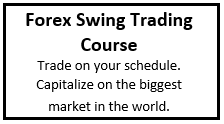
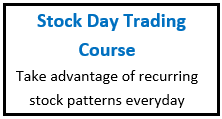
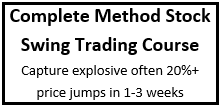
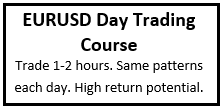
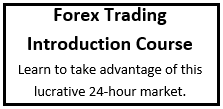
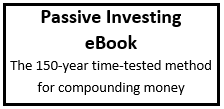
Leave a Reply
Leave a well-reasoned comment or question.